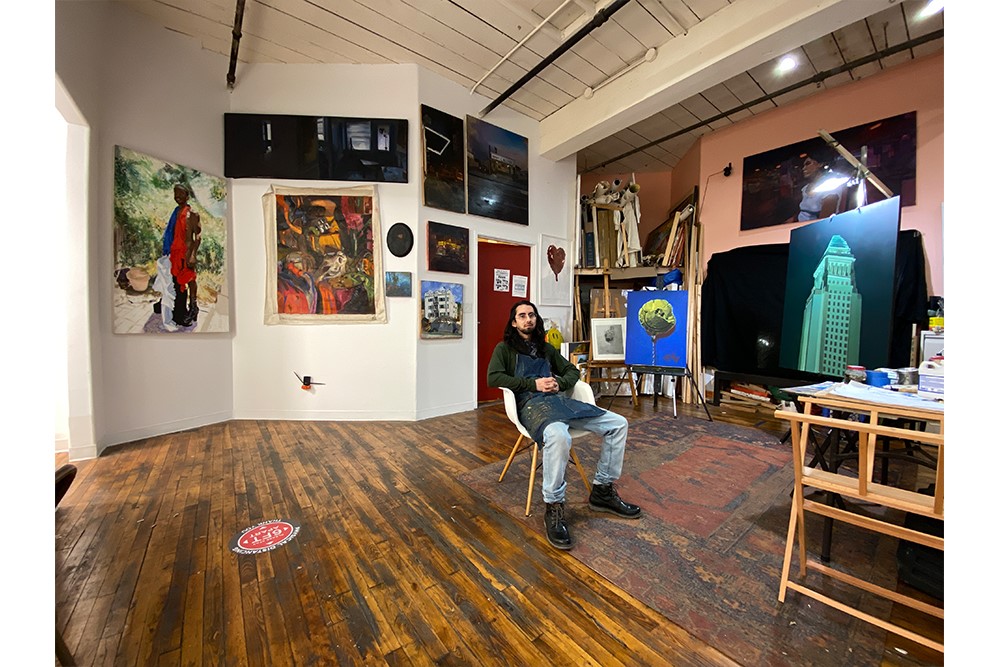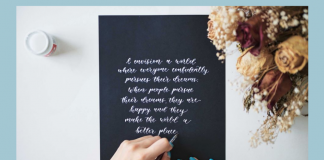Francisco Javier Palomares is an emerging contemporary artist whose work comments on historical narratives and present-day social challenges, such as gentrification and immigration. By seamlessly blending the style of fine art masters and the vibrancy of his Mexican heritage, Francisco creates a visual narrative on the challenges and beauty of his East Los Angeles environment. We are thrilled to welcome him to our blog for this month’s 10 Questions With section.

1) When and why did you decide to become a professional artist?
Creating and crafting was something that I always had in mind. When I was in high school, I was in a college preparatory class and we were researching colleges that we wanted to go to. I asked the teacher if they had any information on art college and they didn’t. They were basically saying that art is not considered a professional career and they didn’t even have the information because we are not encouraging you to go to art college. In some ways, I’m happy that it happened that way because it forced me to find the information myself. So I asked my mom to go for a campus tour at Art Center College of Art and Design in Pasadena, and as soon as I stepped onto the campus I just felt at home. I was 15 at the time and I decided that was what I wanted to do.
2) How did making such an important decision at that age affect your artistic journey?
It took some challenging decisions because in order for me to take art classes (to build up my portfolio) I had to make room in my schedule at the time, so I dropped that college preparatory class which was a prerequisite to get into art. My teachers were thinking that I wanted something easier, like I was done working hard and I wanted to get easy grades. They were asking all these questions like, “Do you know how much an artist makes in a year?” They thought it was the wrong decision but nonetheless my mom supported me. This was a real transformation in my life because once I entered my art class, I was just so eager and passionate to learn art and the teacher noticed that in me. One day she suggested that I apply to this program at Ryman Arts, a non-profit that gives high school students a scholarship to take college art classes. So, at 16 I began taking college courses at USC and it was like an eye opener as it introduced me to professional artists and art colleges. A whole other world that I felt was what I was always craving.
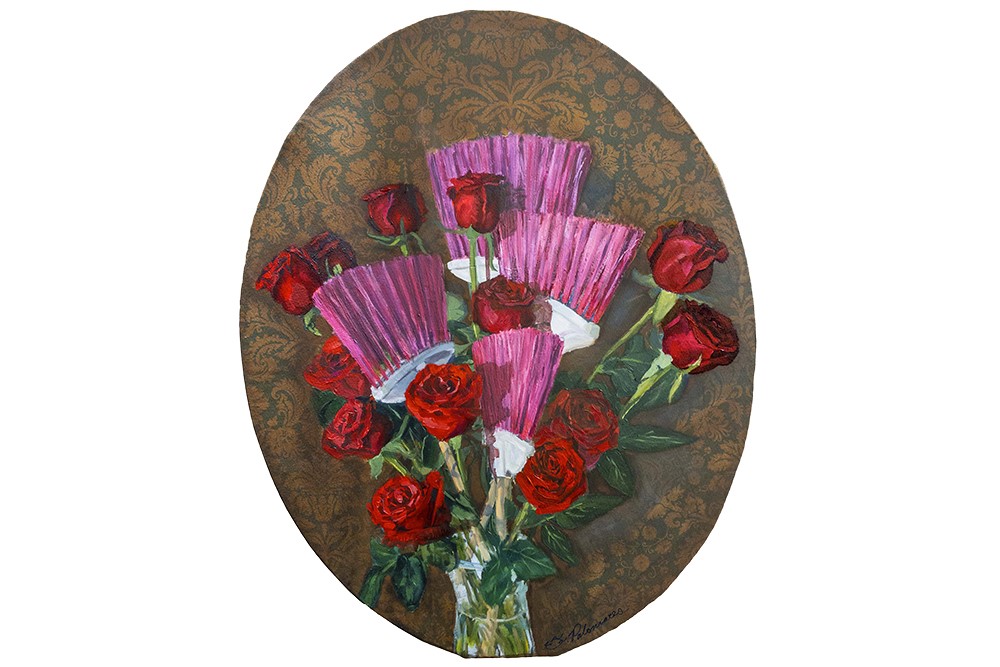
3) Other than your mom who always supported you, has anyone in particular inspired your creativity and artistic passion?
When I look at my family in general, I think that we all have an artistic sensibility, but I don’t think that we all recognize it. My grandpa was a trumpet player, but it was seen in the family like it was a side gig, his way of making money. Same as my grandma, she knits but it’s all a sense of survival, rather than an artistic passion. Even my mom, she says, “I don’t know where you got this artistic inclination,” but you walk into her house and she is painting the walls different colours. It’s not a picture but she is doing her own colour gradations and a very artistic flair. Other aunts and uncles are married to artists, a cousin plays the drums. I feel like it’s in my genes.
4) Do you have a style or medium you prefer to work with?
I use primarily oil painting. My approach is very classical, it’s very rooted in the fundamentals of Italian Renaissance paintings. This idea of chiaroscuro, composition and proportion is really rooted in those principles.
5) Where do you find inspiration?
I use my everyday experiences, like what’s happening now, to make those stories. I live next to Boyle Heights in Los Angeles, which is primarily Latinos and a lot of gentrification is happening. As an artist I’m not going to unwelcome somebody; instead, my art – for instance, a piñata – is almost like saying, “Look at me. You can gentrify all East LA, but the fact is that I’m still here and I’m still making art and my community is still here.” That’s sort of my indirect statement. When you see my work at an art gallery, it’s a giant piñata in the middle of the room that you can’t ignore because it’s so big, it’s like a Latino community is so big that you can’t ignore it.
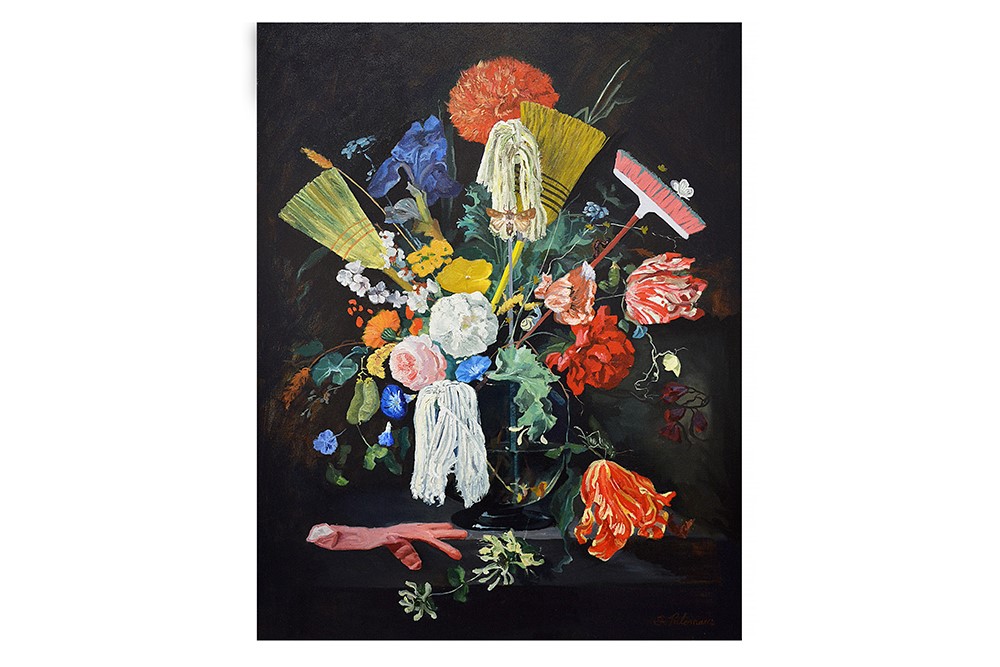
6) I really like how you combine a classic still life with modern everyday cleaning objects in Homage to My Mothers. Can you tell us about the inspiration behind it?
When I was in high school, my mom always said, “Why don’t you paint pretty things? You could make money painting pretty things.” And I wanted to paint something pretty like flowers, but that subject matter has been done, and even if you do it well, how does that separate me from others? How does that make me present in the moment and what I’m trying to say? I love to paint beautiful things but how do I make it authentic to myself and to my experience? It would be like an imposter to paint that kind of subject material when that wasn’t my upbringing or is my economic status or my class. I’m not connected to that, but I’m connected to those worlds on a parallel level. And when I added the cleaning supplies, that’s my mom, who started her own cleaning business. So, this painting is me: this is my upbringing of everybody around me doing some kind of service job but then I find myself in another world too, in the fine arts world where the crowd is staggeringly different – wealth, luxury, resources. So, this is where I want to be in the fine arts world, this is where I dwell, but this is my background, and this is who I am too.
7) How does your work comment on present-day social challenges?
As I get older, going to museums and galleries I can see what kind of stories are being told and it’s always people of colour and struggle and violence, tragedy and injustice in the background. It’s never beauty, leisure and culture. So, my effort is that I paint a classical painting but when you look at it closely, you’ll notice it’s very Latino, or people of colour and immigrant oriented. And it’s like I’m making a voice for the community. In a way it’s fitting in paintings from art history that represent my community now and not just the tragedy, also the fun and the humour in it. That’s the way of our community, even though there’s trouble you can always laugh about it. That’s the Latino spirit.
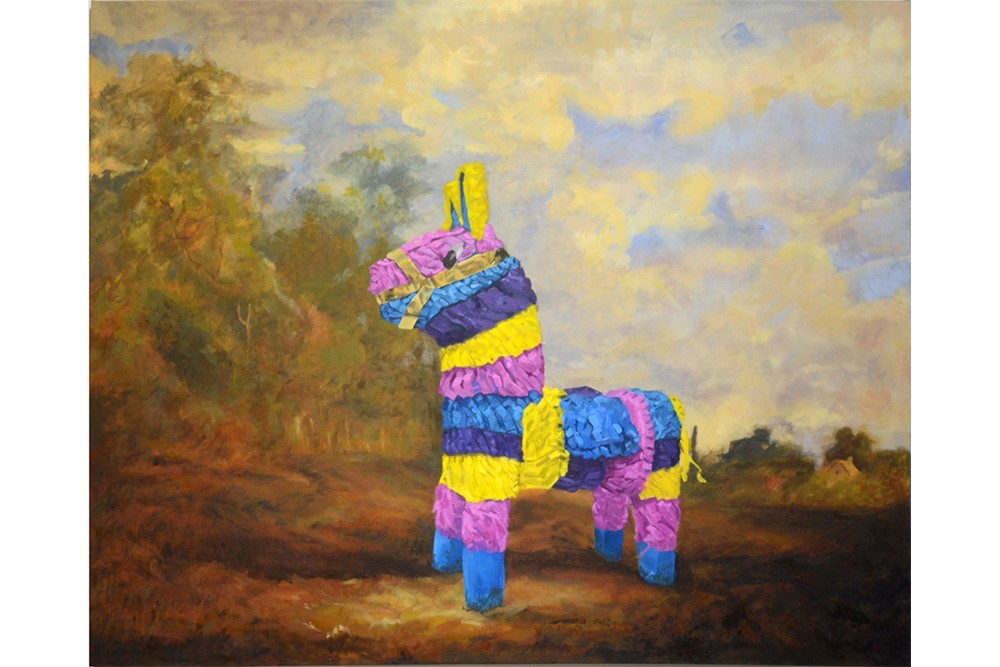
8) How do you think growing up in East LA has formed you as an artist?
It showed me challenges and struggle but also humour and pride about who we are. It’s a sense of toughness and being street-smart and to be exposed to the good and the bad. I take a lot of pride in being a local from here. And because it’s Mexican American you can grab things from both cultures and make your own. That’s very unique and I love being both.
9) You have a fun mobile studio out of a street vending cart. What was the inspiration behind it?
It basically came from desperation, from need. In 2014 I graduated from college and I was working at the Museum of Contemporary Art Los Angeles and there was this freeway that I’d exit to get to work. Every now and then I’d see people selling produce in a street vending cart and I thought, “I literally need to do that” because I wasn’t selling any artwork, and I was desperate because I was working so hard and having all this art piling up on me. I kept playing that idea over and over in my head and then in 2019 I was telling a friend about this idea and he got so excited that he gave me money to help me get started. I started looking at fruit carts and found this one that was beaten up and slowly I started putting it back together and before I knew it, I had it. I had the cart! And once summer hit, I started going out, selling my paintings.

10) How has the reception been?
I started at Echo Park and it was interesting, but I wasn’t getting the reception I expected. Mostly because people didn’t get it. At first, they thought I was selling actual fruit; they wanted to buy fruit and got disappointed when they saw I had art. But now I go to the Arts District, where I live. One of the things I’m most proud about is that people see me out there and they see a Latino boy and they think, “Oh, he doesn’t have a formal education; he might not have papers” – all these constructions, but when you get close and you speak to me you realize that there’s a lot of thought behind this and that it’s not just to make money. It’s a performance piece and every day I’m there I’m making a statement for Latinos like, “We are here.” And for artists, who are really entrepreneurs and that we can pivot, when everybody is freaking out about what do during the pandemic and how to make money, we are thinking an outside gallery, that’s innovation. And I’m very proud of that. That regardless of the time, I can be an entrepreneur and move according to the times.
Bonus: We’ve started a new tradition where we ask every featured artist to do a shoutout to any contemporary fellow artist that inspires them, so we can feature them in the future, as a way of #artistssupportingartists. Please nominate a fellow artist and tell us why you admire their work.
I would like to do a shoutout to Hedy Torres and Narsiso Martinez. They are both figurative artists who document the people overlooked, like migrant workers, Latinos, and the homeless.
To learn more about Francisco’s work please visit his website and his Instagram account.

